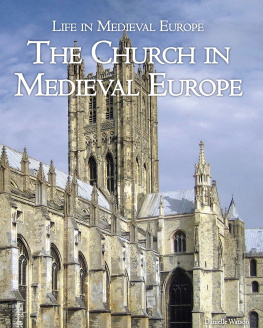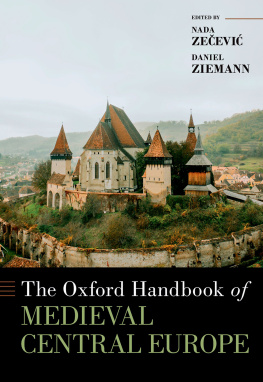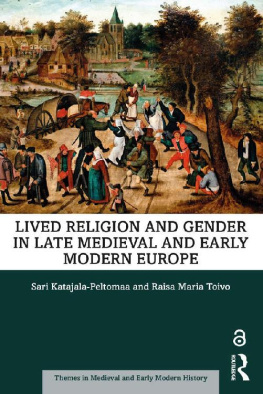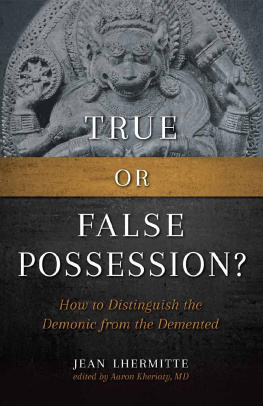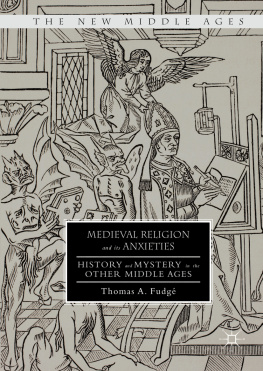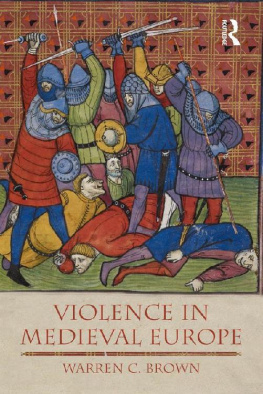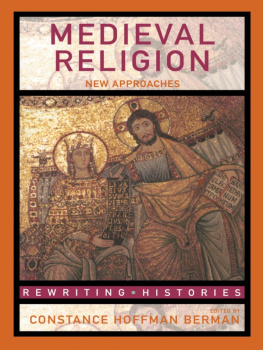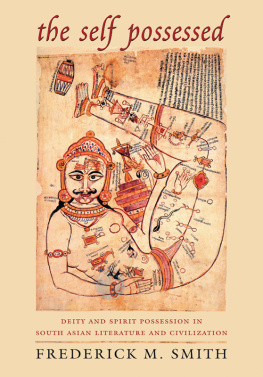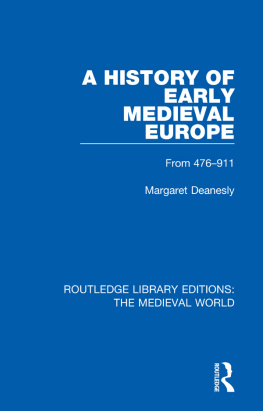Katajala-Peltomaa Sari - Demonic Possession and Lived Religion in Later Medieval Europe
Here you can read online Katajala-Peltomaa Sari - Demonic Possession and Lived Religion in Later Medieval Europe full text of the book (entire story) in english for free. Download pdf and epub, get meaning, cover and reviews about this ebook. year: 2020, publisher: Oxford University Press USA - OSO, genre: Religion. Description of the work, (preface) as well as reviews are available. Best literature library LitArk.com created for fans of good reading and offers a wide selection of genres:
Romance novel
Science fiction
Adventure
Detective
Science
History
Home and family
Prose
Art
Politics
Computer
Non-fiction
Religion
Business
Children
Humor
Choose a favorite category and find really read worthwhile books. Enjoy immersion in the world of imagination, feel the emotions of the characters or learn something new for yourself, make an fascinating discovery.
- Book:Demonic Possession and Lived Religion in Later Medieval Europe
- Author:
- Publisher:Oxford University Press USA - OSO
- Genre:
- Year:2020
- Rating:3 / 5
- Favourites:Add to favourites
- Your mark:
- 60
- 1
- 2
- 3
- 4
- 5
Demonic Possession and Lived Religion in Later Medieval Europe: summary, description and annotation
We offer to read an annotation, description, summary or preface (depends on what the author of the book "Demonic Possession and Lived Religion in Later Medieval Europe" wrote himself). If you haven't found the necessary information about the book — write in the comments, we will try to find it.
Demonic Possession and Lived Religion in Later Medieval Europe — read online for free the complete book (whole text) full work
Below is the text of the book, divided by pages. System saving the place of the last page read, allows you to conveniently read the book "Demonic Possession and Lived Religion in Later Medieval Europe" online for free, without having to search again every time where you left off. Put a bookmark, and you can go to the page where you finished reading at any time.
Font size:
Interval:
Bookmark:

General Editors
John H. Arnold
Patrick J. Geary
and
John Watts

Great Clarendon Street, Oxford, OX2 6DP, United Kingdom
Oxford University Press is a department of the University of Oxford. It furthers the Universitys objective of excellence in research, scholarship, and education by publishing worldwide. Oxford is a registered trade mark of Oxford University Press in the UK and in certain other countries
Sari Katajala-Peltomaa 2020
The moral rights of the author have been asserted
First Edition published in 2020
Impression: 1
All rights reserved. No part of this publication may be reproduced, stored in a retrieval system, or transmitted, in any form or by any means, without the prior permission in writing of Oxford University Press, or as expressly permitted by law, by licence or under terms agreed with the appropriate reprographics rights organization. Enquiries concerning reproduction outside the scope of the above should be sent to the Rights Department, Oxford University Press, at the address above
You must not circulate this work in any other form and you must impose this same condition on any acquirer
Published in the United States of America by Oxford University Press
198 Madison Avenue, New York, NY 10016, United States of America
British Library Cataloguing in Publication Data
Data available
Library of Congress Control Number: 2020930616
ISBN 9780198850465
ebook ISBN 9780192591029
DOI: 10.1093/oso/9780198850465.001.0001
Printed and bound in Great Britain by Clays Ltd, Elcograf S.p.A.
Links to third party websites are provided by Oxford in good faith and for information only. Oxford disclaims any responsibility for the materials contained in any third party website referenced in this work.
The seeds for this project were sown years ago when I was a doctoral student and first came across miracles involving demonic possession. They caught my attention as intriguing and even amusing anecdotes. My first impression was that the details, such as the shameful songs and stones thrown, were expressions of quite straightforward frustration, even infuriation. Soon enough I learned that at stake were much more than fits of anger; some of these people were likely to have been severely ill as they had died soon afterward. Into the same category were placed various kinds of afflictions, some of which seemed mild enough. Furthermore, the exact same symptoms could have been labelled differently in different collections. Nothing was straightforward, I found out.
The only constant feature that remained was the happy ending all these cases had; in the end, the saints miraculous powers drove away the malign forces and restored peace and harmony. The inevitable positive outcome (a sine qua non) of a miracle narration is something I have learned to value after long discussions with colleagues working with other kinds of judicial material. When it comes to miracles, whether they were recorded in a canonization process or in a miracle collection, things may get a bit rough along the way, but in the end all will be fine; nobody gets burned or otherwise lastingly punished, and even sinners are given an opportunity to repent. As the reading of the chosen source material essentially guides the historians perceptions of the past, as a form of self-evaluation I ponder if and how this positive outcome has, at least subconsciously, affected my analysis of the phenomenon. On occasion, my argumentation differs from other scholars of the field. I tend to see collaboration where some other scholars see subjugation, and joint efforts for cure where others argue for joint methods of punishment.
I have always been more interested in the fractures and divergences within dominant discussions than in arguing for fixed categories or the uniform and uncomplicated evolution of a phenomenon. This resonates with and is encouraged by the chosen sources, since another invaluable feature of miracle narrations is their richness. They offer an opportunity to study phenomena and peoples lives which are rarely found in other kinds of texts and their capacity to provide information will not be easily exhausted. Needless to say, care and skill are needed when tackling this treasure trove in order to understand what they are really about, as miracle narrations are so much more than entertaining anecdotes. I view the increasing popularity of this material with both pleasure and caution. Due diligence is needed when miracles are used as source material. Therefore, I found it important to also include explicit comments on the sources and methodology within the text.
Yet another thing I have learned as this process matured was the multifaceted nature of the phenomenon of demonic possession; it was connected to so many things in the culture and society of the Middle Ages that practically anything could be studied from the perspective of demonic presence. Daily life, gender, sexuality, identity, disability, spirituality, and politics, for example, stand out in the narrations. They were all major components in the construction of medieval culture and are major themes in current historiography. Indeed, I had a hard time choosing the major themes and structuring the argumentation of this book. The most important of all options for my approach, however, was religion as lived practice. It provided the link between the various themes of this book. For the current volume lived religion is both a thematic approach and a methodology. I thank the external readers for their thoughtful comments and competent guidance on these matters. Thanks to their comments, the richness of the cases and detailed narrations is hopefully more accessible to readers.
As the process of writing this book has been a long one, the debt of gratitude is likewise enormous. The History Department in the Faculty of Social Sciences at Tampere University and especially Trivium (Tampere Centre for Classical, Medieval, and Early Modern Studies), always with friendly and helpful colleagues, has been a fruitful place to conduct this research. I want to thank especially Raisa Maria Toivo, Jenni Kuuliala, and Ville Vuolanto for being my rehearsal audience, letting me ventilate my thoughts about the project, and commenting on my texts. I would also like to thank Gbor Klaniczay, Christian Krtzl, Marko Lamberg, Didier Lett, Marianna Muravyeva, Katariina Mustakallio, Susanna Niiranen, Letizia Pellegrini, and Laura Ackerman Smoller for collaboration in various sub-projects related to this book.
The Academy of Finland has been most generous in funding the research for the volume in hand. The work for this book started with my Academy of Finland post-doctoral project Gender and Demonic Possession in Late Medieval Europe (201114); it was continued in affiliation with the Academy of Finland Centre of Excellence History of Society: Re-Thinking Finland 14002000 (201217), and finished during the current Academy of Finland Centre of Excellence History of Experiences (2018). Both of the centres have been headed by Pertti Haapala. I thank him for the research time and opportunities these centres have offered me.
I am very grateful to Oxford University Press for accepting my book to be published in the Oxford Studies in Medieval European History series. The experienced and kind staff at Oxford University Press have been most helpful. I am especially indebted to the series editor-in-chief John Arnold for comments and encouragement during this process.
Font size:
Interval:
Bookmark:
Similar books «Demonic Possession and Lived Religion in Later Medieval Europe»
Look at similar books to Demonic Possession and Lived Religion in Later Medieval Europe. We have selected literature similar in name and meaning in the hope of providing readers with more options to find new, interesting, not yet read works.
Discussion, reviews of the book Demonic Possession and Lived Religion in Later Medieval Europe and just readers' own opinions. Leave your comments, write what you think about the work, its meaning or the main characters. Specify what exactly you liked and what you didn't like, and why you think so.



